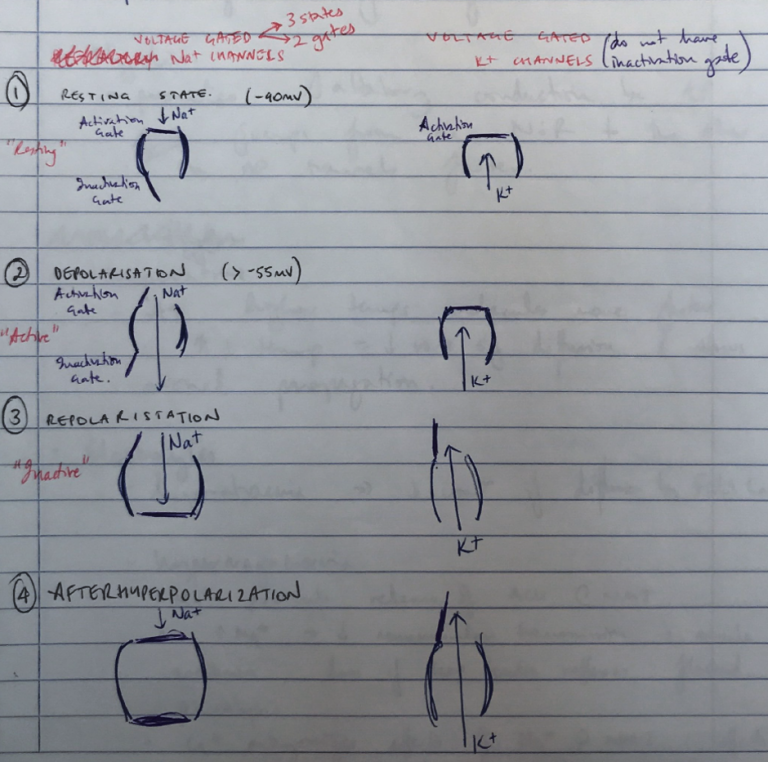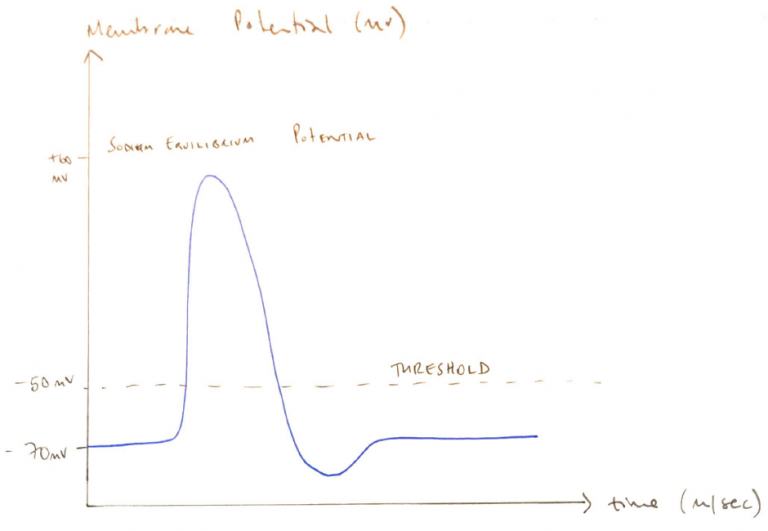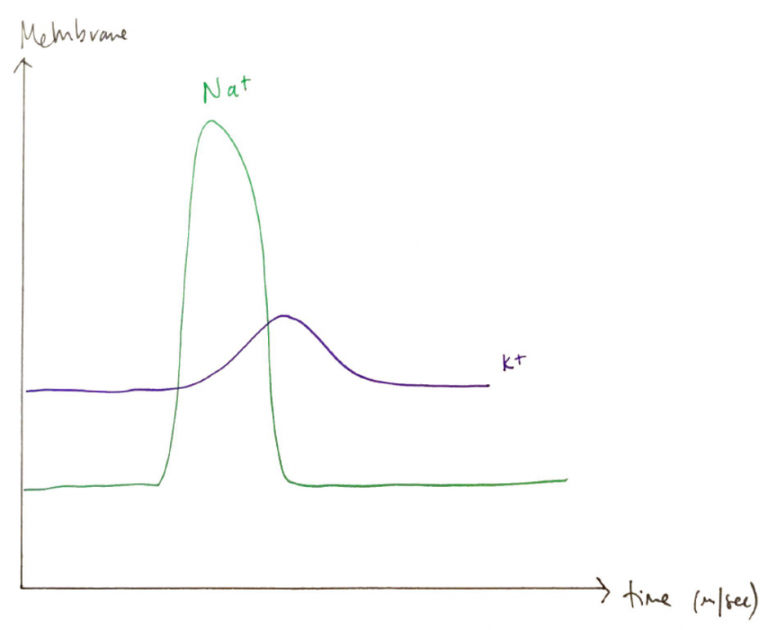K1vi: The physiology of excitation and conduction in nerve axons.
The factors which delay axonal conduction.
- A neuron is a specialised cell transmitting nerve impulses
- They transmit information from one cell to another by conducting an electrical impulse & secreting chemical NTs
- Ions flow across nerve cells through 3 types of ion channels:
1. Non-Gated Ion Channels
- Always open
- Important for establishment of RMP
- Found throughout neuron
- Govern flux of Na+/K+ when neuron is in resting state
2. Ligand Gated Ion Channels
- Activated by neurotransmitters
- Found at dendrite/soma of neuron
3. Voltage Gated Ion Channels
- Required to initiate & propagate an AP
- Found on axons + axon terminals
At rest
- RMP -60mV
- Reflects the steady state described by the Goldman Equation
- Extrac [Na+] > intrac [Na+]
- Intrac [K+] > Extrac [K+]
- Cell permeability K+ >>> Na+ because there are many more non-gated (leaky) K+ channels cf. Na channels
- ∴RMP of neuron is much closer to Equilibrium Potential for K+ (EK)
- In a neuron:
- EK = -100mV
- ENA = +70mV
- Neuron RMP -60mV ∴ closer to EK
- Because sodium is far from its equilibrium potential, there is a large driving force on Na+ when Na+ channel open
Ap Initiation & Propagation
- Axon hillock with high density of voltage gated Na+ & K+ channels generates an AP
- Depolarisation of Axon hillock to threshold causes generation + propagation of AP
- Membrane depolarised → voltage gated Na+ channels open → Na+ channels (+ve feedback)
- Explosive activation of many voltage-gated Na+ channels when threshold reached
- If the initial depol does not reach threshold (-55mV) → NO AP generated
- ∴ Initiation of AP is an ‘ALL OR NOTHING EVENT’
- Threshold (-55mV) reached → activation gate of Na+ channel open → Na+ influx
- Voltage gated K+ channel closed (initially) ∴Na+ influx unopposed
- Later K+ channels open → K+ efflux → ∴no permeability to Na+
- K+ channels are still open & K+ efflux continues
- Eventually both channels close & membrane potential returns to RMP
Refractory Period
- Impossible to evoke another AP during the Absolute Refractory Period when Na+ channels are open
- Followed by Relative Refractory Period where a supramaximal stimulus can evolve an AP
Factors Delaying Axonal Conduction
Fibre Size
- Large diameter axons conduct quicker because they leave less resistance ∴permit a greater flow of ions
Myelin
- Promotes Saltatory conduction because AP jumps from one NoR to the other
- ∴AP travels faster
Temperature
- At higher temps, molecules move faster
- ∴↓temp = ↓rate of diffusion & slows axonal propagation


